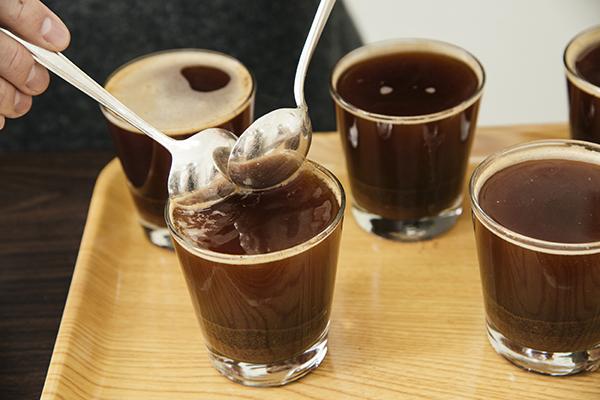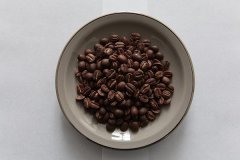Healthy coffee.| When is the best time to add creamer to your coffee?

For professional baristas, please follow the coffee workshop (Wechat official account cafe_style)
I like cream in my coffee, but I also want the coffee to be as hot as possible. I know cream will cool the coffee, so when should I add it? Do you want to add the coffee as soon as you pour it, or before the entrance? Which way can I drink the hotter coffee? Is there any difference between the two methods?
Drinking coffee is simple, delicious and healthy, but it is all knowledge.
I doubt whether ancient Greek philosophers would bother with such a question (but they had no coffee to drink at the time), which is not a big question that shakes the world, but it is challenging.
In fact, as long as you prepare a thermometer with high accuracy, you can solve this problem. However, you must measure exactly the same amount of coffee and cream, prepare cups of exactly the same shape and size, and make sure that the initial temperature of the two cups of coffee is exactly the same. However, it is not easy to conduct rigorous scientific experiments in the kitchen, so let's think about it together.
Other things being equal, you might think that the two methods will eventually get the same temperature, because you will add up the calorie x of coffee and the calorie y of cream to get the result that the calorie of coffee with cream is "x".
Unfortunately, according to Walker's Law of chaos in the World, other conditions can never be the same. Whether black coffee or creamy coffee, we are unlikely to drink it as soon as it is served. It means that during the period when you are in the mood, the coffee will cool more or less. After all, the temperature must be lower than that of the coffee, and the direction of the heat will always flow from the high temperature matter to the neighboring low temperature matter, so the temperature will flow from the liquid to the atmosphere. Whether cream coffee or black coffee, it is the same at this point.
However, there are two important differences between creamy coffee and black coffee: first, adding cream will slightly increase the liquid content of one cup of coffee; second, adding cream will slightly lower the temperature of one cup of coffee.
The importance of the first difference is that when the amount of coffee increases, it will take more time to cool down, and if the added cup of coffee is to drop to a certain temperature, it will have to emit more calories (for example, at the same temperature, a large tank of hot water must take longer to cool down than a small cup of hot water).
As for the second difference, there are similar results. Compared with black coffee with nothing added, the cooling rate of cream coffee with lower temperature is slower than that of black coffee with nothing added. The main reason is that the smaller the temperature difference between the object and its surroundings, the slower the cooling rate of the former. So cream is still "add first, win first".
Therefore, I suggest that the sooner you add cream, the better, so that the temperature of the coffee can be increased by about 0.5 ℃. I am sure this 0.5 ℃ will make a major breakthrough in your life.
It is gratifying that this scientific problem is accepted by college students. Afelau has led rigorous scientific experimental research, and the results have been published in the Spring 1999 issue of the Dawson Journal of Experimental Scientific Research, a very high-quality journal dedicated to the publication of professional original research papers by undergraduate students at Dawson College in Montreal, Quebec, Montreal Dawson College, Quebec.
"calories" in chemistry and nutrition
What chemists call "calories" is not the same as dietitian's "calories". In chemistry, one calorie refers to the heat needed to raise the temperature of one gram of water by 1 ℃, while one calorie in nutrition, or the "one calorie" you see in a slimming book or food label, refers to the heat needed to raise the temperature of 1000 grams (1 kilogram) of water by 1 ℃. Obviously, the card of nutrition is a thousand times that of chemistry, and chemists will call the card of nutritionist "kilocalorie" or "kcal"-which puts me in a very awkward position. As a chemist, I talk about food in this book, and the readers may include people from both backgrounds. Therefore, in order to make this book read consistently, I can only ask my friends in the field of chemistry to adopt the definition of nutrition unless I make a special statement. In most cases, I will use "calories" to represent heat or heat energy, not as a rigorous unit of calculation.
In order not to make the wronged chemical friends unhappy, many "thousands" are provided here for free. Those who need it can cut and paste it before any word "card" in this book: thousands and thousands.
In addition, readers using the metric system should also note that one card in nutrition, that is, a thousand cards in chemistry, is equivalent to 4.19 kilojoules (kJ).
Important Notice :
前街咖啡 FrontStreet Coffee has moved to new addredd:
FrontStreet Coffee Address: 315,Donghua East Road,GuangZhou
Tel:020 38364473
- Prev

Drink coffee healthily | know the variety to make the coffee more delicious
The exchange of professional baristas Please follow the coffee workshop (Wechat official account cafe_style) drinking coffee has become a trend in recent years, chain coffee shops, specialty cafes can be seen everywhere, if you want to further understand the charm of coffee, start from understanding the varieties! The flavor will change with the variety of coffee. The native tree species of coffee are Arabica,
- Next

Who says coffee can only be made with milk? 11 kinds of coffee partners are waiting for you to choose!
Communication of professional baristas Please follow the coffee workshop (Wechat official account cafe_style) in addition to delicious, from a health point of view, what is good for coffee? This is a topic of concern for every coffee addict. Cheng Hanyu, a home care dietitian of the Taipei dietitian Association, especially on sugar, cream, fresh milk, soybean milk, black sugar, coconut oil, cinnamon, cocoa, honey, wine, lemon and so on.
Related
- Beginners will see the "Coffee pull flower" guide!
- What is the difference between ice blog purified milk and ordinary milk coffee?
- Why is the Philippines the largest producer of crops in Liberia?
- For coffee extraction, should the fine powder be retained?
- How does extracted espresso fill pressed powder? How much strength does it take to press the powder?
- How to make jasmine cold extract coffee? Is the jasmine + latte good?
- Will this little toy really make the coffee taste better? How does Lily Drip affect coffee extraction?
- Will the action of slapping the filter cup also affect coffee extraction?
- What's the difference between powder-to-water ratio and powder-to-liquid ratio?
- What is the Ethiopian local species? What does it have to do with Heirloom native species?

